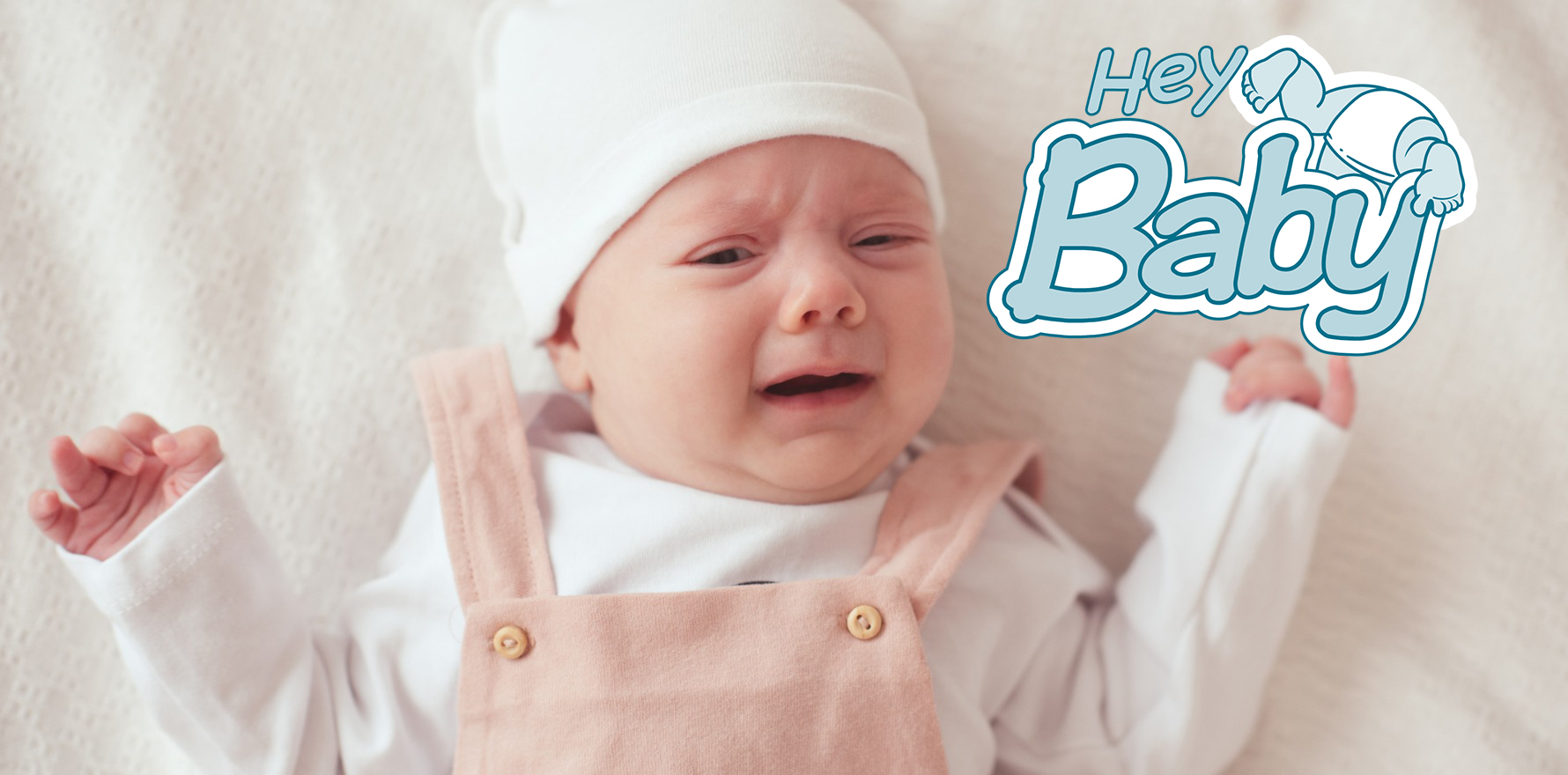Making a problem of stimulation may place genetically or psychosocially vulnerable infants at risk.
“My baby is quickly overstimulated and overtired during the day. And it’s even worse in the evenings! We try not to let him get over-excited before sleep times and to keep the rooms dim, but by the end of the day he’s so overstimulated, he won’t sleep. It’s beyond exhausting. I’m incredibly worried because I know this isn’t good for him.”
Parents are often told they should be decreasing their baby’s sensory stimulation in the lead-up to sleep times (which might happen multiple times a day), in order to improve the baby’s sleep and sleep development, and also for the sake of their own sleep and mental health in the long term.
The recommendation to avoid overstimulation frightens parents, since who doesn’t want the best possible developmental outcomes for their baby? But advice arising out of the overstimulated infant hypothesis, which informs the popular “sleep training” methods, lacks an evidence base and increases parental anxiety.1-3
Making a problem of stimulation may place genetically or psychosocially vulnerable infants at risk, because human infants require rich and changing environmental experiences for optimal neurodevelopment.4, 5
Here, I share with you:
- An overview of the evidence base, and
- A selection of scripts for parents used in the sensory domain of Neuroprotective Developmental Care (also known as NDC or “the Possums programs”).
Evidence from developmental neuroscience
Sensory-motor experience profoundly shapes the development of the human brain from before birth and throughout infancy.6-8 When communicating with parents, NDC applies the terms “sensory nourishment”, “sensory adventure”, or “sensory stimulation” as a shorthand for sensory-motor and social-environmental enrichment. Social interaction is a vital form of complex sensory-motor exchange.
Sensory-motor development
The NDC or Possums Sensory Program proposes that:
- Infants in low-sensory environments cry and fuss because of unmet needs for sensory-motor enrichment (derived from the Neurobiological Model of Infant Crying).9
- Rich environmental stimulation in early life promotes neural resilience, by increasing the likelihood that any minor sensory-motor neural perturbations are stabilised quickly, without amplifying into disrupted developmental trajectories.10 (For more information, please see Box 1).
I find ways to emphasise the importance of rich sensory nourishment to all new parents, finding moments to use words such as:
“Babies are laying down neural templates from the beginning of their life in direct response to rich and changing input across all their senses: what they can see, hear, smell, taste, touch. They are also laying down neural templates in direct response to kinaesthetic and proprioceptive stimulation, which is movement of and pressure against the baby’s joints and muscles, and vestibular stimulation, which is irregular movements of the baby’s body in space. Babies often cry and fuss when their sensory needs aren’t met.”
“I know this might be hard to believe, because it’s so different to what you’ve heard. But the NDC or Possums programs doesn’t even use the words ‘overstimulation of the baby’ because that’s an out-of-date concept. Babies have two hardwired hungers: the hunger for milk, and the hunger for rich and changing sensory nourishment. Although the hunger for sensory nourishment is not as life-or-death as the hunger for milk, it is still an incredibly powerful biological drive.”
Development of social communication skills
For optimal development, infants need “to-and-fro” reciprocity chains of interaction with loving carers, who respond to the baby’s cues through experimentation. The baby also needs opportunity to initiate these reciprocity chains, and this happens naturally when parents are attending to and enjoying their little one.11-14
Reciprocity chains downregulate both parent and infant stress responses. They are driven by the powerful evolutionary drive of enjoyment. Increasingly long and complex sensory-motor reciprocity chains throughout the first year of life optimise trajectories of social communication development. While multi-sensory reciprocity chains may involve language, song and sound, interaction through the physicality of affection and play is foundational. Verbal to-and-fro communication is just one specialised form of sensory-motor interaction or reciprocity chains.11-14
You might explain:
“From an evolutionary perspective, the time after the sun sets is scary for babies. Often when the baby dials up in the evening, we’re told this is a sign of overstimulation and overtiredness, but I’d like to suggest you think of it as a time of very high sensory need. Many parents, already exhausted at the end of the day, find it easiest to meet their baby’s sensory needs in the evenings by getting social – visiting friends’ or relatives’ homes, dining out as a family, having visitors come around, or visiting the evening shops and markets (if covid-19 restrictions allow). Planning ahead to implement these strategies may be even more important if you are often parenting alone in the evenings.”
“Rowdy physical play with your baby is incredibly good for his developing brain! This is also true in the evenings, when the sleep pressure is rising but not yet high enough for the big night-time sleep. There is no need to dim the lights until the baby is either asleep or her sleep pressure is clearly very high. Laughter, squeals and enjoyment are very good for the developing nervous system and are definitely not ‘overstimulation’!”
Applying an evolutionary lens to sensory-motor and social communication development
Rich non-social sensory and motor stimulation is required for optimal sensory-motor development. Infants are hardwired by the Homo sapiens environment of evolutionary adaptation to “expect” rich and changing non-social and social sensory-motor experience. The human infant evolved in environments that included: 15
- Patterns of rich, multi-centric social interactions within family groupings. Both adults and older children interacted physically and verbally with the baby, providing rich sensory-motor stimulation (in comparison with the common contemporary Western cultural experience of a nuclear family and socially isolated primary caregiver).
“If you are like most mothers or primary carers, you often wake up exhausted and it’s difficult to imagine how you’ll ever get the two of you (or you and the kids) out of the house! But if you’ve planned out the week’s sensory adventures and social activities in advance, it’s a lot easier. Ask [your support person] to help you find time for planning. You might set up lunch with a friend, various parents’ groups, take daily walks (or two or three!), visit your workplace, visit the local park, and so on. Even though I know it sounds like a lot of hard work when I say this, most women [or primary carers] look back over a week in which they spent a lot of time out of the home and report that the week was substantially easier, not harder. This is because it’s incredibly hard work meeting a baby’s sensory needs in the low-sensory interior of a home, one on one. Outside your home, the world does it for you.”
- Prolonged physical contact – that is, being held or carried for much of the day and night against a loving sibling or adult’s body. This provides the infant’s developing kinaesthetic, proprioceptive and vestibular systems with high levels of postural variability against gravity. In the very young infant, general movements of her limbs and trunk occur against the carer’s changing bodily configurations. (Lying on a mattress is a very low sensory experience, devoid of opportunity for postural variability against shifting exposure to the effects of gravity. Parent education about the importance of tummy-time and the need for postural experience against gravity is well understood now. However, tummy-time is just one kind of opportunity for sensory and sensory-motor stimulation.)
“Carrying your baby gives her a lovely rich dose of enfolding multi-sensory nourishment. Are you a family who finds it helpful to use a baby carrier at times? You don’t have to use it all the time, just to the extent that is comfortable for you, but many families find the baby carrier very useful.”
“Remember not to close in the pram in with a cover or cloth, so that your baby can drink in the rich sensory nourishment of the outside world!”
- The complexity of the outdoors environmental stimulation, with its change of air temperature, breeze, sounds, odours and immeasurably complex visual stimulation. (Parents might move into a different room when a baby dials up but often this doesn’t help, because our interior environments are very low sensory relative to the complexity of the outdoors environment.)
“Have you ever noticed that if your baby is dialling up and you step outside the home, even just onto the deck, the baby dials down? That’s because the baby is moving from a low-sensory environment into the incredibly rich sensory experience of the outside world.”
“Think of a single tree. The baby may not yet be able to focus but will nevertheless see the incredibly complex play of shades of green, of light and shadow, of the movement of hundreds of thousands of leaves in the breeze. Compare this with a wall inside the house! And that is just one single tree: if you think of the amazing complexity of the outdoors environment across all the senses, you can see why our interior environments are so low sensory for babies. Unfortunately, a mobile, no matter how colourful and engaging, is likely to meet the baby’s sensory needs for just one short moment, if that!”
How to help parents meet their baby’s sensory needs
If the child described at the beginning of this article is in the first six months of life, you could offer the following key script from the NDC or Possums programs.
“We have two tools to keep our babies dialled down during the day: rich and changing sensory nourishment, and milk. If babies’ need for sensory nourishment and milk are met, then sleep looks after itself (once the sleep pressure is high enough) and you don’t need to worry about it. All you need to do when the baby dials up is to think: ‘OK, here’s a feed’, or ‘OK, what’s our next sensory adventure?’. I’d invite you to experiment between these two tools throughout the day because this way we can make life with your baby as easy and as enjoyable as possible.”
“We can trust your baby to self-regulate the amount of sensory stimulation she needs at any given time if we simply experiment with responding to her cues, using the two NDC tools to dial her down as best we can.”
If the baby (or toddler) is older than six months, adapt the script above to focus on supporting the primary carer as she fills the days with sensory adventures outside the home. Of course, she would complement the child’s sensory explorations with the usual solids, and, to the extent that feels right for any individual breastfeeding woman, frequent and flexible breastfeeds. Watching or playing with the other children helps provide rich sensory experience, an advantage of a day-care setting or older siblings.
If there is an older sibling, you might say:
“Create days around [the big brother or sister’s] needs: playdates, playground visits, kindy or school drop-offs and pick-ups, music classes, soccer. Pick up the baby and go even if he is asleep! Following around his [big brother or sister] and expecting your baby to fit in, using your two tools, is best for baby’s brain, and easiest for you.”
The next Hey Baby! article will address specific recommendations for environmental enrichment during the lockdowns of the covid era.
Dr Pamela Douglas is a GP and Medical Director of Possums & Co. www.possumsonline.com, a charity that educates health professionals in the evidence-based Neuroprotective Developmental Care (NDC) or Possums programs, including the Possums Baby and Toddler Sleep Program. If you wish, you can refer to or upskill to become an NDC accredited practitioner. There are lots of free videos and other resources for parents with babies here, and online parent peer support is available for a nominal fee. Pam is an Associate Professor Adjunct with the School of Nursing and Midwifery, Griffith University, and Senior Lecturer with the Primary Care Clinical Unit, University of Queensland. She is author of The discontented little baby book: all you need to know about feeds, sleep and crying.
References
- Harries V, Brown A. The association between use of infant parenting books that promote strict routines, and maternal depression, self-efficacy, and parenting confidence. Early Child Development and Care. 2019;189(8):1339-1350.
- Harries V, Brown A. The association between baby care books that promote strict care routines and infant feeding, night time care, and maternal-infant interactions. Maternal and Child Nutrition. 2019:e12858.
- Etherton H, Blunden S, Hauck Y. Discussion of extinction-based behavioral sleep interventions for young children and reasons why parents may find them difficult. Journal of Clinical Sleep Medicine. 2016;12(11):1535-1543.
- Delafield-Butt JT, Freer Y, Perkins J, Skulina D, Schogler B, Lee DN. Prospective organization of neonatal arm movements: a motor foundation of embodied agency, disrupted in premature birth. Developmental Science. 2018;21:e12693.
- Douglas PS. Appendix 2: Neurodevelopmental challenges and the crying baby. In: UQP, editor. The Discontented Little Baby Book. Brisbane: UQP; 2014. p. 222-226.
- Molnar Z, Luhmann HJ, Kanold PO. Transient cortical circuits match spontaenous and sensory-driven activity during development. Science. 2020;370: https://doi.org/10.1126/science.abb2153.
- Hadders-Algra M. Early diagnostics and early intervention in neurodevelopmental disorders – age-dependent challenges and opportunities. Journal of Clinical Medicine. 2021;10:861.
- Werchan DM, Baumgartner HA, Lewkowicz DJ, Amso D. The origins of cortical multisensory dynamics: evidence from human infants. Developmental Cognitive Neuroscience. 2018;34:75-81.
- Douglas PS, Hill PS. A neurobiological model for cry-fuss problems in the first three to four months of life. Med Hypotheses. 2013;81:816-822.
- Douglas PS. Pre-emptive intervention for Autism Spectrum Disorder: theoretical foundations and clinical translation. Frontiers in integrative neuroscience. 2019:doi.org/10.3389/fnint.2019.00066.
- Feldman R. Parent-infant synchrony and the construction of shared timing: physiological precursors, developmental outcomes, and risk conditions. Journal of Child Psychology and Psychiatry. 2007;48(3).
- Mansfield AK, Cordova JV. A behavioral perspective on adult attachment style, intimacy, and relationship health. In: Woods D, Kanter J, editors. Understanding behavior disorders. Oakland CA: Context Press; 2007. p. 389-416.
- Greenspan S. The Affect Diathesis Hypothesis: the role of emotions in the core deficit in autism and in the development of intelligence and social skills. Journal of Developmental and Learning Disorders 2002;5(1):1-44.
- Shonkoff JP, Garner AS. The lifelong effects of early childhood adversity and toxic stress. Pediatics. 2011:doi:10.1542/peds.2011-2663.
- Feldman R. The neurobiology of mammalian parenting and the biosocial context of human caregiving. Hormones and Behavior. 2016;77:3-17.
- Hadders-Algra M. Early human brain development: starring the subplate. Neuroscience and Biobehavioral Reviews. 2018;92:276-290.
- Hadders-Algra M. Variation and variability: key words in human motor development. Physical Therapy. 2010;90:1823-1837.
- Yu C, Smith LB. Multiple sensory-motor pathways lead to coordinated visual attention. Cognitive Science. 2017;41(supplement):5-31.
- Trevarthen C, Delafield-Butt JT. Autism as a developmental disorder in intentional movement and affective engagement. Frontiers in integrative neuroscience. 2013;7:doi:10.3389/fnint.2013.00049.
- Hadders-Algra M. Early human motor development: from variation to the ability to vary and adapt. Neuroscience and Biobehavioral Reviews. 2018;90:411-427.





